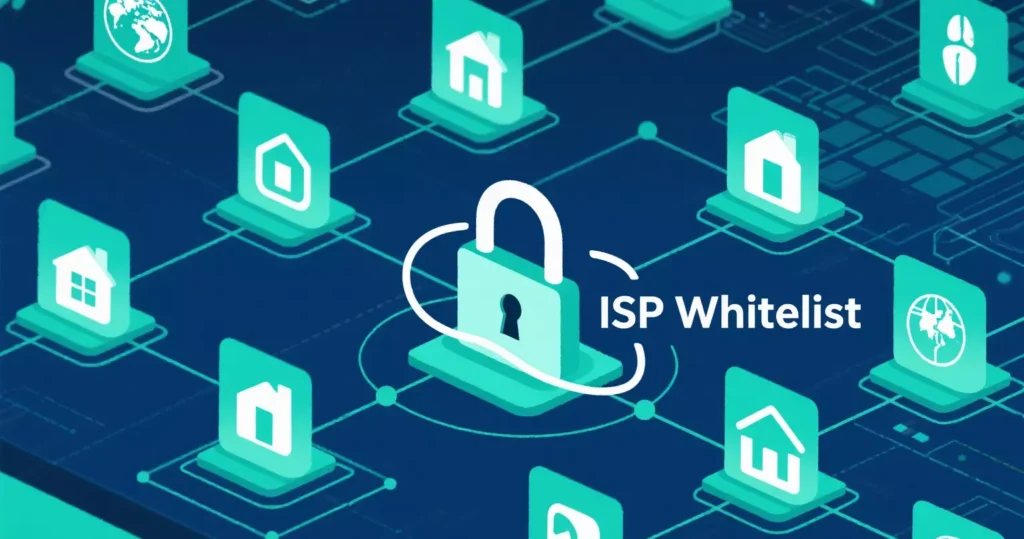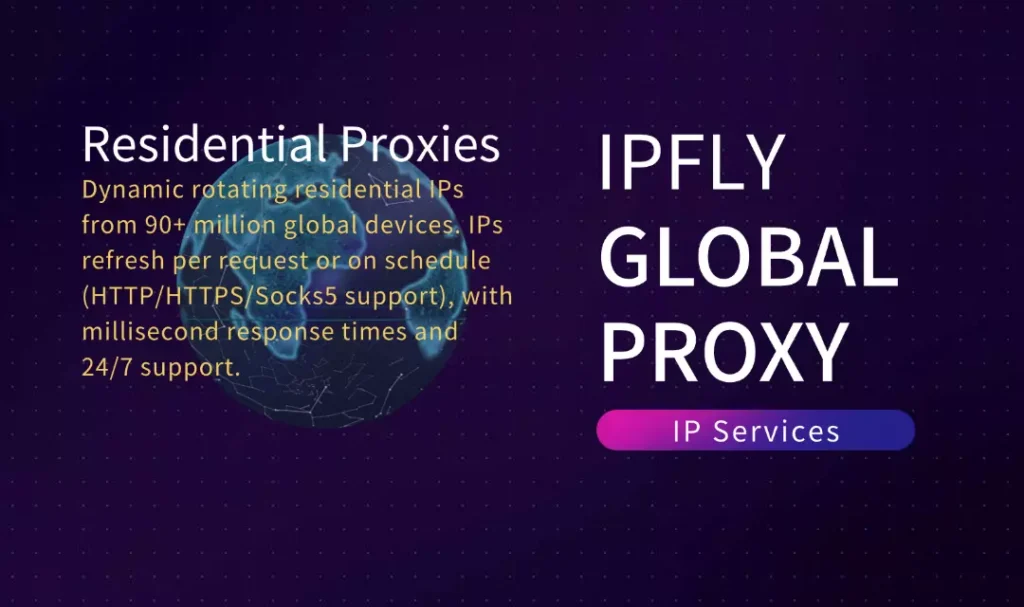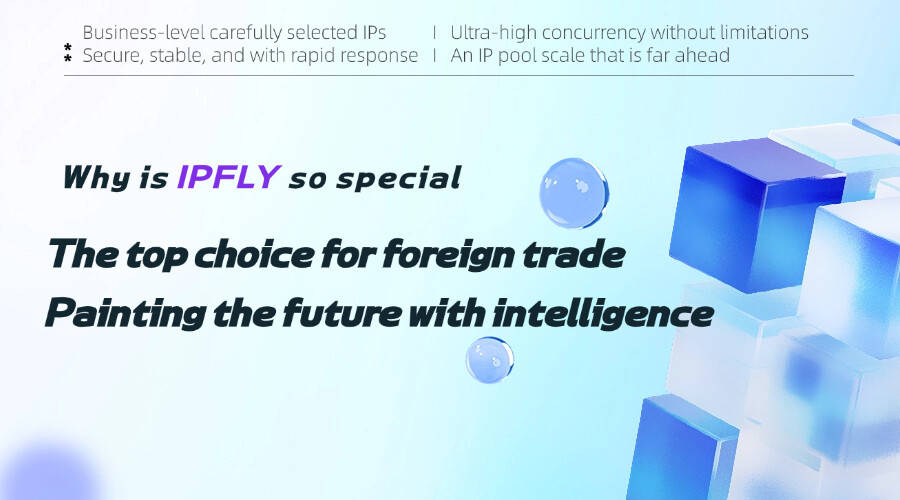In 2025, more digital platforms and AI content services have quietly adopted ISP whitelist systems to control who gets access to their data, media, and tools. If you’ve ever tried reaching an AI-powered streaming platform or research database only to see your connection denied, chances are you’ve bumped into one of these. Over the past year, we’ve seen businesses struggle with this growing trend, and at IPFLY, we’ve focused on solving it with our Dynamic Residential Proxies. Today, I want to share how our proxies help companies navigate these restrictions safely, efficiently, and at scale.

What Is an ISP Whitelist and Why It’s Growing in 2025
At its core, an ISP whitelist is a list of approved internet service providers or specific IP ranges that a website or platform allows through its firewall. Anyone outside those ranges is automatically blocked. While this technique isn’t new, its use has exploded this year, especially in industries like:
1. AI-generated content services
2. Regionalized streaming platforms
3. Secure fintech APIs
4. Research archives behind government restrictions
As AI media tools became a major business asset in 2025, many providers turned to ISP whitelists to prevent abuse, scraping, and unauthorized use. The catch? Legitimate businesses often get caught in the crossfire.
The Real-World Challenges ISP Whitelists Cause
Our clients constantly share their frustrations with us, because navigating these restrictions is no easy task.
1. Blocked Access to AI Tools
AI-generated video platforms, image banks, and localization APIs now check your connection’s originating ISP. If your IP isn’t on the whitelist, you’re denied access.
2. Streaming Content Limits
Many media companies running content A/B tests or global campaign checks can’t view international platform variations anymore, thanks to strict ISP restrictions.
3. Proxy Detection Crackdowns
Free VPNs, shared proxies, and even datacenter proxies are now easily flagged and blocked, leaving users unable to pass these ISP whitelists.
The result? Valuable opportunities are lost and productivity bottlenecks you can’t afford in a competitive AI-driven market.
How Dynamic Residential Proxies Easily Bypass ISP Whitelists
Here’s where our solution makes a real difference. Unlike static or datacenter proxies, our Dynamic Residential Proxies source real residential IP addresses from everyday ISPs worldwide. That means when you connect to a whitelisted platform, it looks like a regular home internet user, exactly what those lists permit.
Why It Works:
Trusted Residential ISPs: Our proxy IPs originate from authentic residential networks, helping your traffic blend naturally with allowed users.
Smart IP Rotation: For sensitive platforms, you can schedule IP rotations or keep the same connection when session persistence is needed.
Precise Geotargeting: Choose from thousands of IPs across specific cities and countries to pass both ISP and regional restrictions in one go.
Leak Prevention Features: We’ve built DNS, WebRTC, and IP leak checks directly into our management dashboard so your activity stays airtight.
This isn’t just how to sneak past filters — it’s how to do it securely, without risking bans or connection drops mid-task.
Real Use Cases from Teams We Support

The advantages become obvious when you see what businesses achieve with this setup:
Ad Tech Firms Checking Global Campaign Placements
One of our clients runs targeted ads across Asia and Europe. By pairing dynamic residential proxies with their tools, they verify how their ads render locally, bypassing regional ISP blocks and maintaining campaign integrity.
AI Startups Accessing Regional Data Sources
An AI developer we work with scrapes localized news feeds and public datasets for model training. With our residential proxies, they safely access whitelisted AI resources without their IP pool getting flagged.
Market Research Teams Monitoring AI Tools
When new AI services launch, research analysts need to track performance, content variations, and pricing across regions. Our proxy pool lets them view region-restricted content and platforms that enforce ISP whitelist policies.
These cases all share a need for stable, scalable, and undetectable proxy connections — exactly what our infrastructure is built for.
Pro Tips for Managing ISP Whitelist Challenges
If you’re facing these restrictions in your own workflows, here’s what we’ve learned works best:
1. Always choose residential IPs from verified ISPs to avoid instant detection.
2. Organize your proxy IPs by region and ISP — many platforms whitelist both together.
3. Monitor your IP reputation and connection logs to stay ahead of issues.
4. Use real-time health checks to swap out proxies before connection quality drops.
We routinely help clients set up custom IP pools and automate these monitoring tasks via our dashboard and proxy management API.
Future Trends: Tighter Controls and Smarter Bypasses
The trend toward ISP-based access control is only going to intensify as AI content services grow. In response, we’re expanding our offerings in:
New regions with stricter ISP whitelists
API-based proxy rotation for automated workflows
Deeper reporting and alert systems for connection health and proxy performance
By investing early in infrastructure upgrades and proactive support, we’re making sure businesses can stay ahead of these digital roadblocks.
A Smarter Way to Bypass ISP Whitelists with IPFLY
Getting blocked by an ISP whitelist isn’t just an inconvenience anymore — it’s a productivity killer for AI developers, digital marketers, and research firms alike. That’s why we built our Dynamic Residential Proxy solution with these exact challenges in mind.

With trusted residential IPs, global coverage, smart rotation, and dedicated technical support, our proxy network helps businesses navigate tough restrictions safely and reliably. If you’re looking for a proven way to access AI tools, streaming services, or region-specific content in a whitelist-heavy digital world, our team at IPFLY is ready to help you build the perfect proxy stack.


